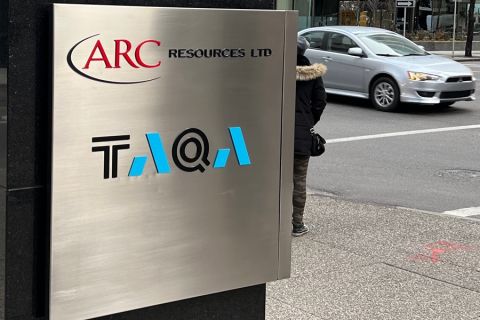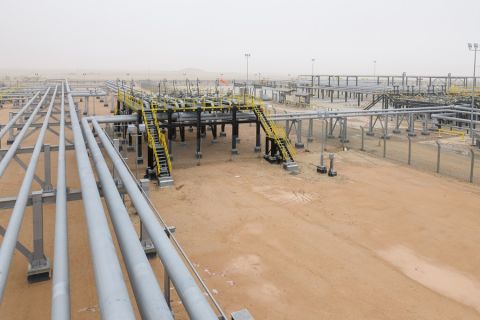Most people in the industry appreciate how the choice of drilling fluid can affect drilling performance since there are well-known performance indicators available. However, is it just as easy to envision how the choice of completion fluid can affect the well completion performance? Probably not.
That’s why Cabot Specialty Fluids asked Ridge AS, a well engineering consultancy, to perform an independent benchmarking study to compare drilling and completion times for wells that have been drilled and completed in the North Sea over the last 14 years.
For the drilling performance benchmarking, two types of drilling fluids were compared: low-solids cesium/potassium formate fluids and oil-based muds (OBM). For the completion-performance benchmarking, the combined effect of completion concept, barrier strategy and fluid type was studied.
Included in the benchmarking study were 89 wells, of which 56 were HP/HT wells. Ridge performed a careful selection of relevant wells. From the collected data, Ridge was able to create a database of drill-in and completion times for three well groups: HP/HT platform wells, HP/HT subsea wells and non-HP/HT subsea wells, all with 8½-in. reservoir sections.
Drilling performance
Net ROP, defined as drilling progress per day, was used as the performance indicator for drilling. This includes tripping, circulating, flow checks and conditioning but excludes time spent on underreaming, coring, logging, waiting on weather and nonproductive time. Significant differences in drilling rate were recognized when comparing the low-solids formate brine-based drilling fluid with OBM. Formate drilling fluids gave net ROP improvements of 74%, 38% and 68% for HP/HT platform wells, HP/HT subsea wells and non-HP/HT subsea wells, respectively (Figure 1). It is believed that the significant time savings are due to some fundamental differences in the two fluid types.

Water- (brine-) based vs. oil-based: The high solubility and diffusion rates of gas in oil give rise to some serious well-control issues when drilling HP/HT wells with OBM. The need for frequent gas and flow checks increases circulating time during both drilling and tripping. Water- (and brine-) based fluids, with low gas solubility and gas diffusion rates, provide instant detection of gas influx and cut circulating time significantly.
The thermophysical properties of water- and brine-based fluids are also more beneficial than those of oil-based fluids. High heat capacity and thermal conductivity provide better cooling of bits and downhole tools.
Solids-free vs. solids-laden: Drilling fluids based on heavy brines do not require the addition of solid weighting material. This positively impacts operation efficiency by reducing the well-known challenges with high rheology, high gels, high equivalent circulating densities (ECDs), barite sag and hole-cleaning. The improved rheology profile in low-solids brine-based fluids allows faster tripping and reduced swab and surge pressures.
Due to stable mud properties, significantly less mud conditioning and fewer wiper trips are required. When drilling HP/HT wells with solids-weighted OBM, up to two bottom-up circulations are required to condition the mud after a round trip. Lower ECDs in brine-based fluids allow higher pump rates and more turbulent flow, which leads to improved hole cleaning in horizontal wells.
Completion performance
For completion operations, time savings are generally much less intuitive and are to a much larger extent related to how various fluids enable more time-efficient completion solutions and processes rather than direct time savings from the fluids.
Ridge divided the completion types used in the North Sea into three main groups: openhole completions, overbalanced perforations and underbalanced perforations. The following was found:
• Openhole completions are generally delivered faster than cased and perforated completions;
• For cased and perforated completions, it was found that wells perforated on drillpipe are delivered significantly faster than wells perforated underbalanced on wireline/coiled tubing (CT); and
• Cleanup to rig is typically not required when low-solids brine-based fluids are used for lower completions as opposed to an average of two days cleanup time with solids-laden OBM completions.
To understand how the fluid choice impacts the completion times, one would need to understand what impact the fluid has on the following steps of the three completion types.
Lower completion: Low-solids formate screen-running fluid enables openhole completions by being compatible with sand screens (nonplugging) and upper completion clear brines. For cased and perforated completions, low-solids brines enable overbalanced perforations on drillpipe, which is significantly faster than perforating underbalanced on wireline or CT in overbalanced or underbalanced fluid after installation of the upper completion and christmas tree. This is time-consuming due to long rig-up time combined with limits of perforation guns per run (typically five to 10 runs for a 100-m [328-ft] pay zone).
Reservoir isolation and casing cleanout: Middle completion installation, casing cleanout and displacement to completion brine in a well with formate fluids and overbalanced formate brine in the upper completion is intuitively simpler than using a combination of OBM and underbalanced fluid. Low-solids formate brines provide benefits through:
• Quicker casing cleanout due to larger swab/surge margins and less mud conditioning;
• Reduced risk of middle completion installation problems (running tool stuck, premature packer setting, etc.) due to minimum solids;
• Reduced risk of debris on top of the pre-installed barrier (a major industry problem);
• Less time to displace to completion brine since the well is already filled with formate fluids; and
• Significant time savings since complex and time-consuming inflow testing of the primary barrier (liner and plugs) is not required when the completion string is run in overbalanced fluid.
Upper completion: The selection of fluid is largely dependent on the chosen barrier philosophy. High-density formate brines allow for upper completion installation in hydrostatic overbalance where the brine serves as the primary barrier. Alternatively, the upper completion can be installed in hydrostatic underbalance. An extensive and time-consuming inflow test is required when the fluid does not serve as the primary barrier.
Predicting well construction performance
The study has delivered an extensive database for predicting well construction times for different completion concepts and fluid choices. Base case time estimates for five commonly used scenarios have been calculated based on benchmarking performance data:
1. Openhole standalone sand screen (SAS) completion: Formate drill-in fluid with overbalanced upper completion in formate brine;
2. Openhole SAS completion: OBM drill-in and lower completion fluid and underbalanced upper completion;
3. Cased and perforated completion: Formate drill-in fluid, perforation on drillpipe and overbalanced upper completion in formate brine;
4. Cased and perforated completion: Formate drill-in fluid, overbalanced upper completion in formate brine and wireline perforation; and
5. Cased and perforated completion: OBM drill-in fluid, underbalanced upper completion and wireline perforation.
All five scenarios are based on an HP/HT platform 8½-in. 500-m (1,640-ft) reservoir section. The perforation times have been set to three days for drillpipe perforation and 10 days for wireline or CT perforation, respectively (study average).
Figure 2 depicts time used for the five drilling and completion strategies. The graphic shows that cesium/potassium formate fluids in overbalanced operations should deliver the following rig-time savings when compared with OBM drill-in fluid used in conjunction with underbalanced upper completion operations.
With this extensive database on hand, which will be continuously populated with new performance data, Ridge is now ready to start phase two of the project, which is the development of a time-cost risk-benefit prediction tool.

FIGURE 2. The graphic shows predicted construction times for a 500-m 8½-in. reservoir section for the five drilling and completion strategies. Cesium/potassium formate fluids in overbalanced operations should deliver improved rig-time savings when compared with OBM drill-in fluid used in conjunction with underbalanced upper completion operations. (Source: Cabot Specialty Fluids)
Recommended Reading
Enterprise Increasing Permian NatGas Production
2024-04-03 - Enterprise Products Partners began service on two natural gas plants: the Leonidas in the Midland Basin and the Mentone 3 in the Delaware Basin, each with a capacity to process 300 MMcf/d of natural gas and 40,000 bbl/d of NGLs.
ARC Resources Adds Ex-Chevron Gas Chief to Board, Tallies Divestments
2024-02-11 - Montney Shale producer ARC Resources aims to sign up to 25% of its 1.38 Bcf/d of gas output to long-term LNG contracts for higher-priced sales overseas.
Paisie: Crude Prices Rising Faster Than Expected
2024-04-19 - Supply cuts by OPEC+, tensions in Ukraine and Gaza drive the increases.
Paisie: Dutch Vehicle Fleet Foreshadows Structural Shifts
2024-03-26 - The expanding role of battery electric vehicles will be supported by the development of associated supply chains, as indicated by Stratas Advisors' forecast of global EV battery production capacity.
Woodside Brings in the Know-how
2024-04-01 - Woodside Energy Group CEO Meg O’Neill is relying on technical sophistication to guide the Australian giant as it takes on three challenging projects in the U.S. Gulf of Mexico.





